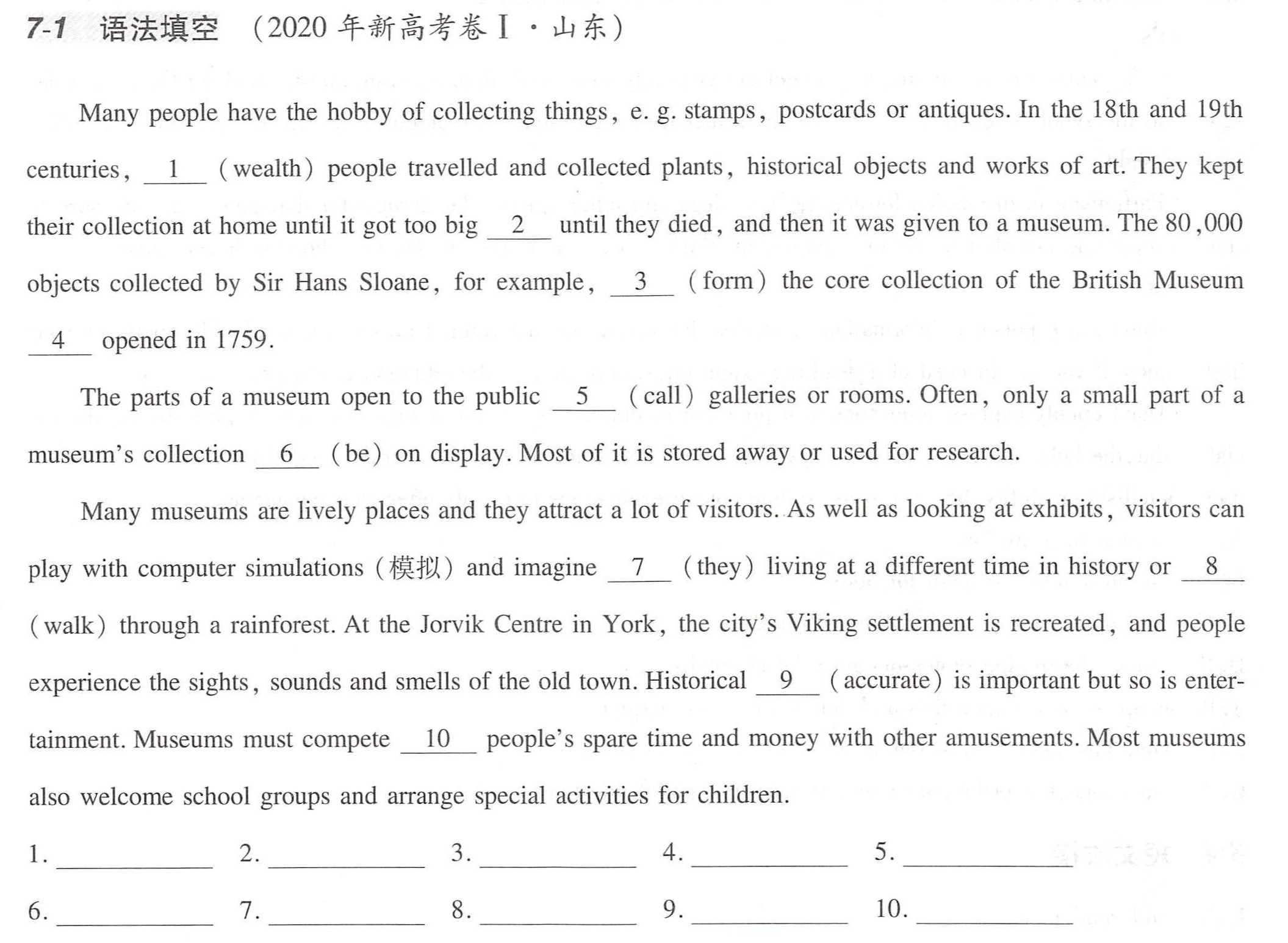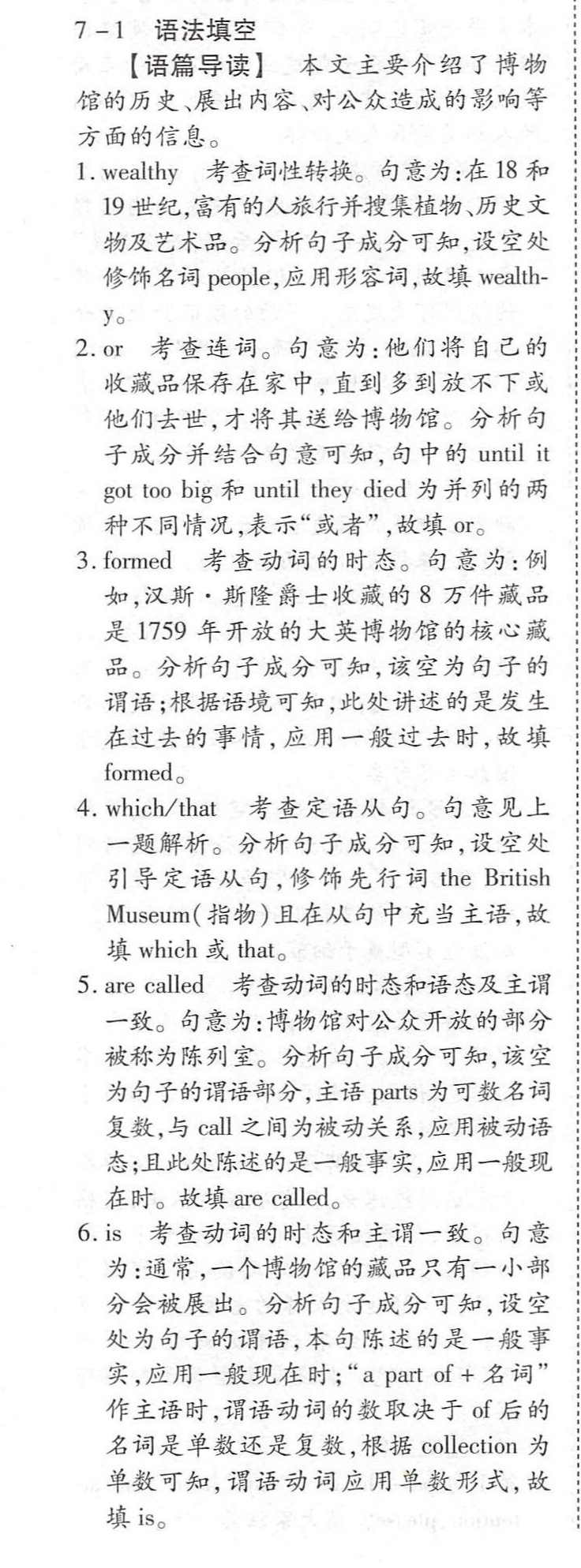题目
..1 语法填空(2020年新高考卷I·山东)-|||-Many people have the hobby of collecting things, e.g.stamps,postcards or antiques.In the 18th and 19th-|||-centuries, 1 (wealth)people travelled and collected plants,historical objects and works of art.They kept-|||-their collection at home until it got too big 2 until they died,and then it was given to a museum.The 80,000-|||-objects collected by Sir Hans Sloane,for example, 3 (form)the core collection of the British Museum-|||- 4 opened in 1759.-|||-The parts of a museum open to the public 5 (call)galleries or rooms.Often,only a small part of a-|||-museum's collection 6 (be)on display.Most of it is stored away or used for research.-|||-Many museums are lively places and they attract a lot of visitors.As well as looking at exhibits,visitors can-|||-play with computer simulations(模拟)and imagine 7 (they)living at a different time in history or 8 -|||-(walk)through a rainforest.At the Jorvik Centre in York,the city's Viking settlement is recreated,and people-|||-experience the sights,sounds and smells of the old town.Historical 9 (accurate)is important but so is enter--|||-tainment.Museums must compete 10 people's spare time and money with other amusements.Most museums-|||-also welcome school groups and arrange special activities for children.-|||-1. __ 2. __ 3. __ 4. __ 5. __-|||-6. __ 7. __ 8. __ 9. __ 10. __

题目解答
答案


解析
语篇导读:本文主要介绍博物馆的历史、展出内容及对公众的影响。考查要点包括词性转换、连词使用、时态语态、主谓一致、代词选择、固定搭配等。解题核心在于结合上下文语境,准确判断语法形式。
关键思路:
- 词性转换(如形容词修饰名词);
- 逻辑关系(并列连词or的用法);
- 时态语态(一般过去时、被动语态);
- 主谓一致(集合名词作主语的处理);
- 代词选择(反身代词与动名词搭配);
- 固定搭配(compete for的用法)。
第1空
考查词性转换。句中需修饰名词people,需用形容词形式,故填wealthy。
第2空
考查连词。表示两种情况的并列(“藏品太多”或“去世”),故填or。
第3空
考查动词时态。描述过去发生的事件(大英博物馆成立),用一般过去时,故填formed。
第4空
考查定语从句。先行词the British Museum为物,从句缺主语,故填which或that。
第5空
考查被动语态。主语parts与动词call为被动关系,且陈述一般事实,故填are called。
第6空
考查主谓一致。a part of collection作主语,collection为单数,故填is。
第7空
考查反身代词。visitors与themselves指代同一对象,故填themselves。
第8空
考查动名词。与living并列作imagine的宾语,故填walking。
第9空
考查词性转换。作主语需用名词,故填accuracy。
第10空
考查固定搭配。compete for表示“竞争...”,故填for。